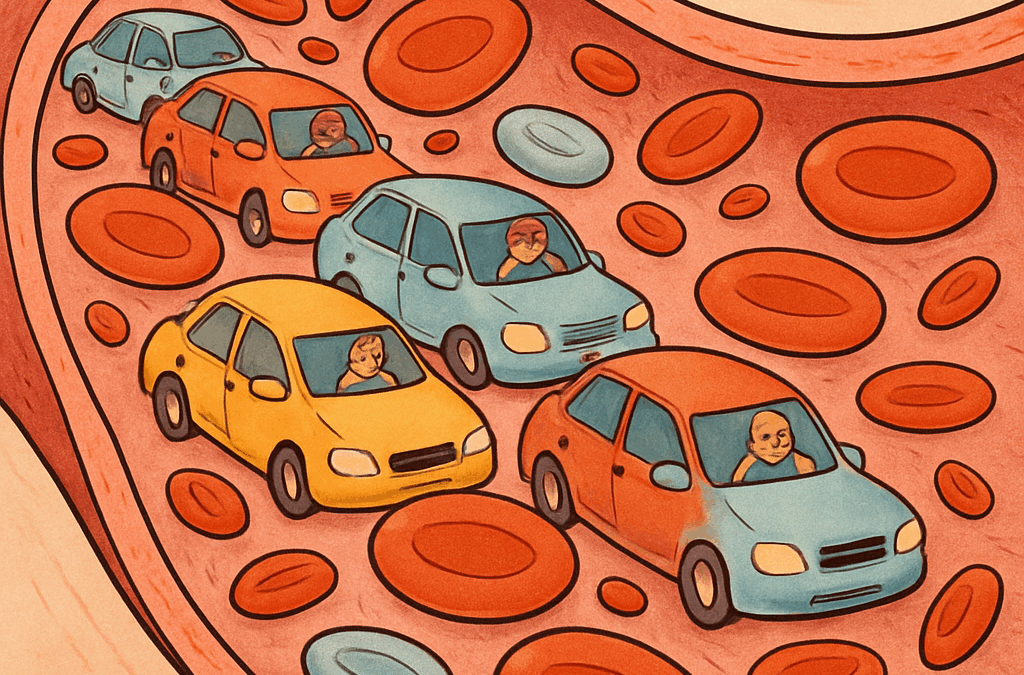Why do I need to keep an eye on my cholesterol levels if I have CKD?
We all know that too much ‘bad’ cholesterol can clog up our arteries (otherwise known as atherosclerosis). We hear a lot about how this might affect our heart or form clots in the blood vessels serving the brain, potentially causing strokes.
But when did you last read about the potential direct risk to our kidneys?
Roughly 180 litres of blood is filtered by the kidneys daily. The kidneys decide what stays in the body and what is passed out in the urine. To do this job, they themselves need a good supply of oxygen and other nutrients. This is delivered by the blood.
If the little filters in the kidneys get clogged up with cholesterol or the kidneys are starved of nutrients, due to a poor blood supply, they struggle to do what we need them to do.
Incidentally, another unhelpful characteristic of atherosclerosis is that it is an inflammatory process. Our kidneys, just like all of our organs, can suffer damage from inflammation too.
How can I interpret the cholesterol numbers on my blood results?
In the old days we talked about total cholesterol levels.
We then had separate levels for our HDL (High Density Lipoproteins or ‘good’ cholesterol) and our LDL (Low Density Lipoproteins or ‘bad’ cholesterol). However, if you added the LDL and HDL together, it didn’t equal the total cholesterol.
What was missing?
Well, LDL isn’t the only harmful compound. There is also vLDL (very low density) and IDL (intermediate density). You really don’t need to remember any of this. There won’t be a test at the end!
Now, you may have noticed that something called Non-HDL cholesterol has crept into your blood results in recent years. This includes all of the ‘baddies’ i.e. LDL, vLDL and IDL. It is thought to be a better description of what is actually happening in our blood vessels and hence a better predictor of risk.
What do these compounds do?
Confusingly, these compounds are not actually made of cholesterol. They simply transport the cholesterol and other fatty substances around the body.
The LDL etc ferry them out of the liver and into the blood vessels where they do their damage. HDL, on the other hand, escorts them back to the liver where they can be put to more positive use.
So, if our blood results reveal that there is too much traffic, loaded with cholesterol, headed out of the liver, a bottleneck might be developing somewhere in the blood system.
It’s time to take dietary or lifestyle action and your doctor may suggest medications.
I promise you that dietary and lifestyle adjustments alone can improve your cholesterol levels significantly.
Generally, and I know I say this repeatedly, dietary change is a far more positive experience if we focus on what is missing.
Rather than demonising the less nutritious foods that are taking up a lot of your stomach space, consider how you might introduce one or two foods that are full of blood vessel protecting magic.
What would you go for? Another portion of fruit, vegetables, beans, lentils, chickpeas, soya products, nuts or seeds?
A great place to learn more about cholesterol management is https://www.heartuk.org.uk/
Or, you could get in touch with a registered dietitian who can tailor the advice to you. They may well have more kidney-protecting tricks up their sleeve too.

